Global Lens Reflections on life, the universe, and everything
A Year in Pictures – 2023
I don’t have to go far to make a photograph. This past year’s images include many captured in my own back yard, from a Red-shouldered hawk to a strolling millipede, from a Pacific tree frog to a pair of young racoons.

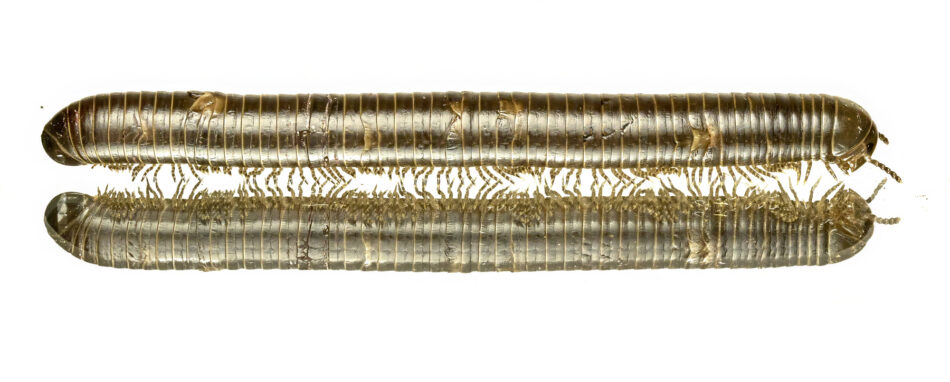


Working at home I captured a rather tired-looking longhorn bee, a shy milkweed bug, droplets of early morning rain stuck on milkweed floss, and a Western Tiger Swallowtail butterfly. When criminal indictments of a former president were announced, I captured the magic moment in my living room.
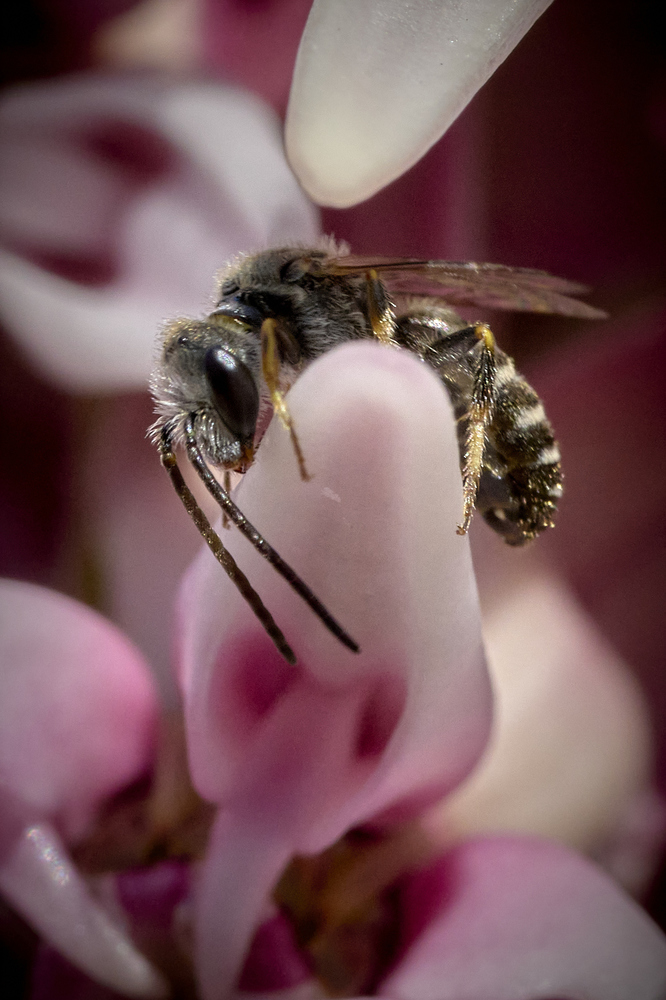
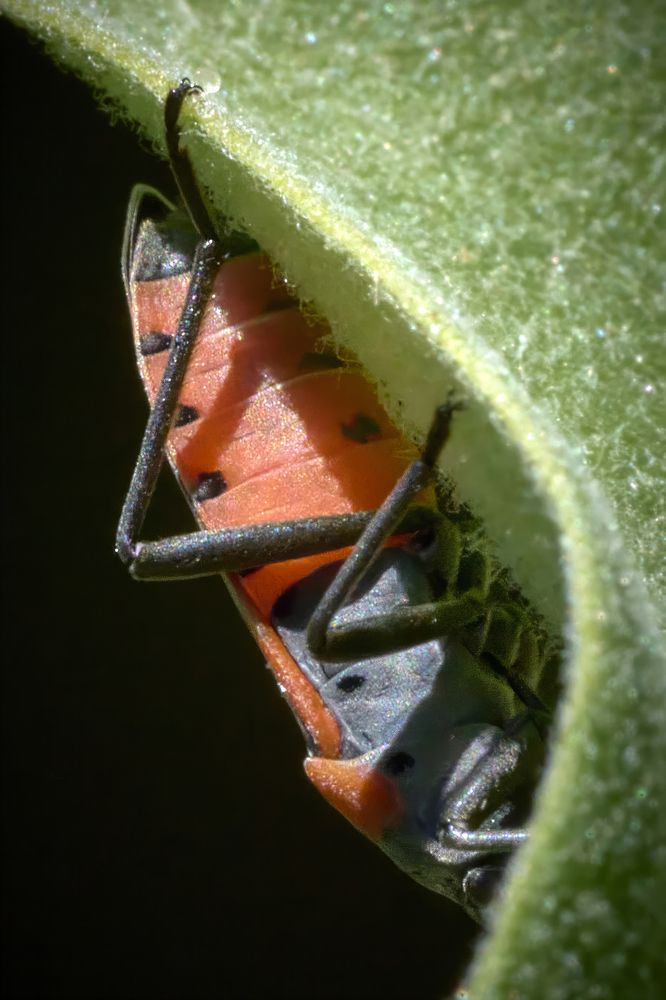
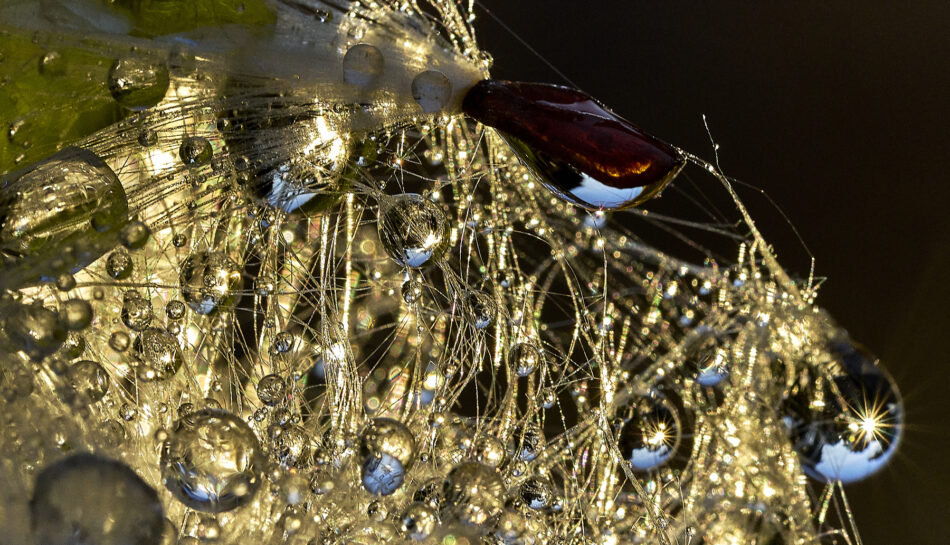
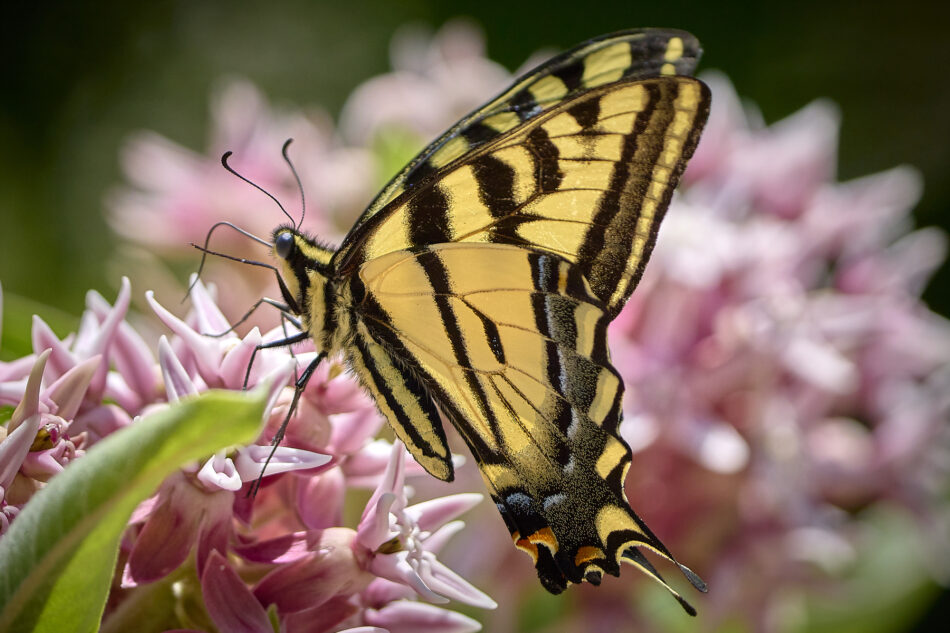

Just beyond my backyard, I photographed the annual Pride march and festival in Eugene. Such joyful expression always seems to bring out the angry white men with bad haircuts, so the Rev. Nicole Berry, a United Methodist pastor, is holding a sign that counters their message of hate.


A few blocks from my house, I documented protestors upset about the sudden decision by a denominational bureaucrat to close a United Methodist congregation that hosted outreach ministries to the local homeless community.
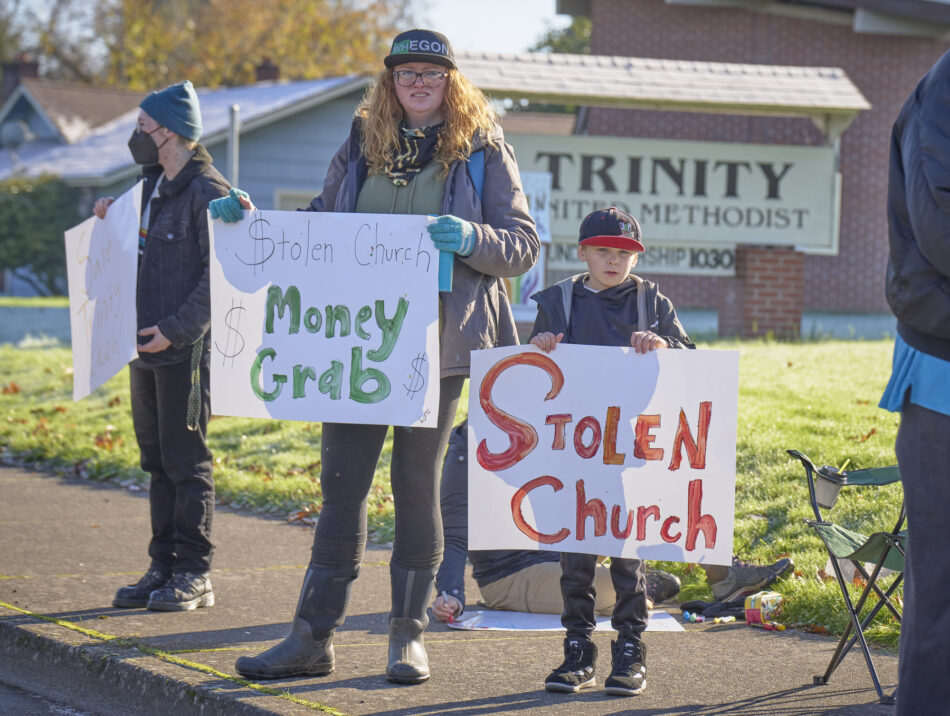
In the coast range west of me, I once again captured the magic of migrating Coho salmon jumping up a waterfall on Lake Creek, a tributary of the Siuslaw River.


In the forests nearby, I found this Froghopper nymph, commonly known as a spittlebug, doing the back stroke in the envelope of tiny bubbles it produces from sap of a thimbleberry plant.
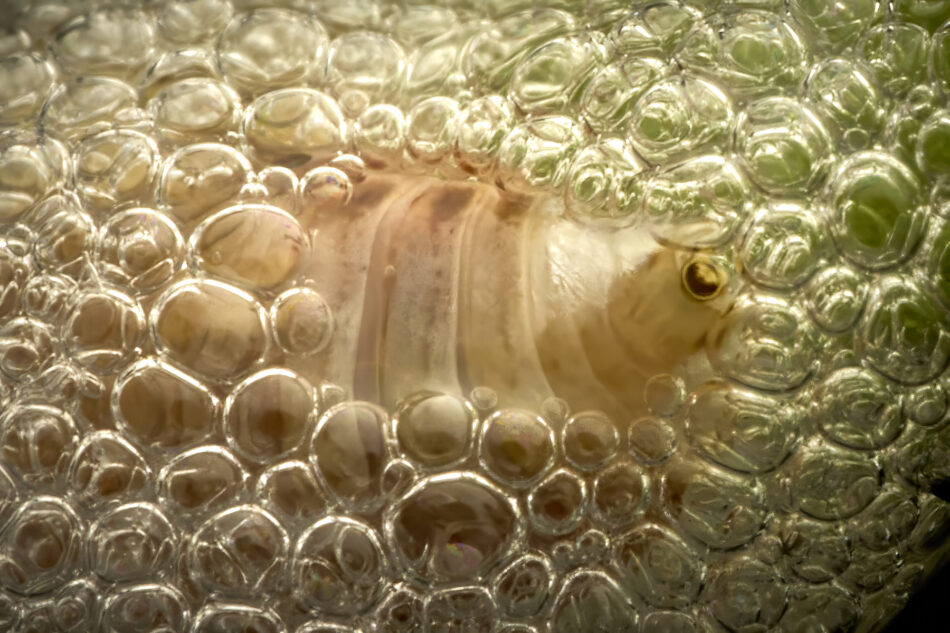
In the fall I photographed an annular eclipse from 4800 feet in the Oregon Cascades. Since the weather in Eugene was supposed to be not very eclipse-friendly, we camped for the night high in the Kalapuya Divide. The cloud cover was still almost total, but we got occasional glimpses of the sun as it approached annularity, including this one about two minutes before total annularity. A few seconds later the clouds thickened, and although it got noticeably darker, we didn’t see the famous ring of fire we’d been hoping for. And which we’d been reminded of when the local NPR station played Johnny Cash singing Ring of Fire a few minutes earlier.
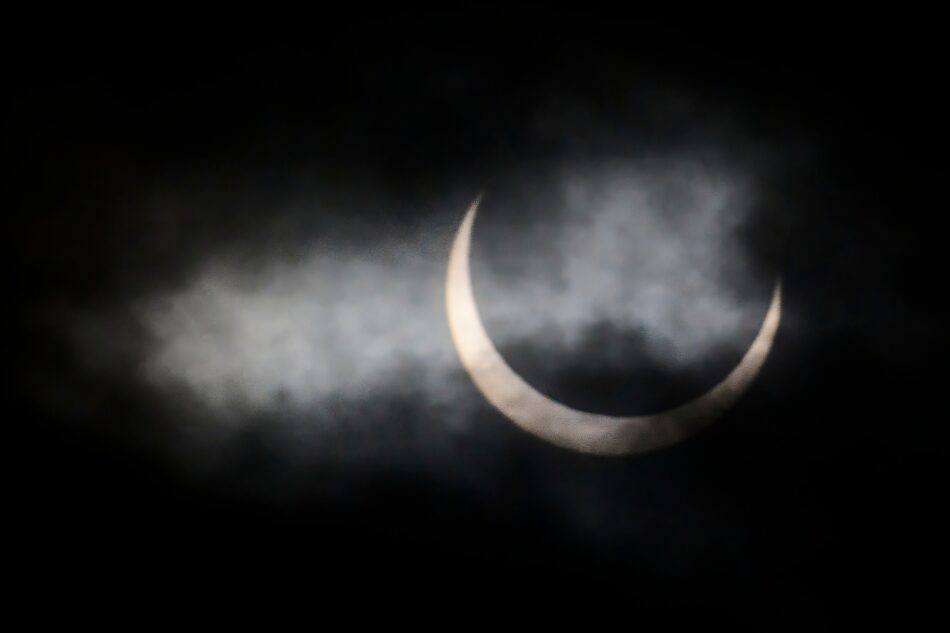
And here’s a grasshopper crawling through an alpine meadow, a very gold Water strider floating on the surface of a small creek, some mushrooms gracing the shadowy forest understory of Whidbey Island, and a butterfly – likely a Woodland Skipper – visiting a flower high in the Cascades.
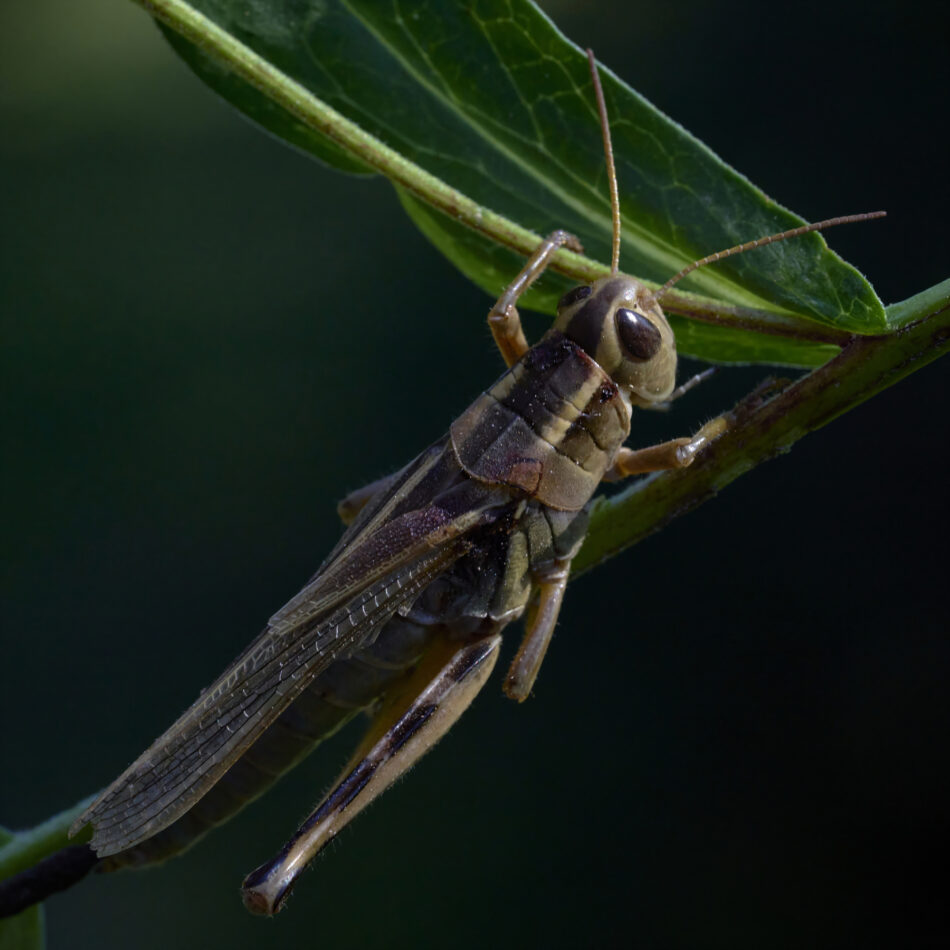


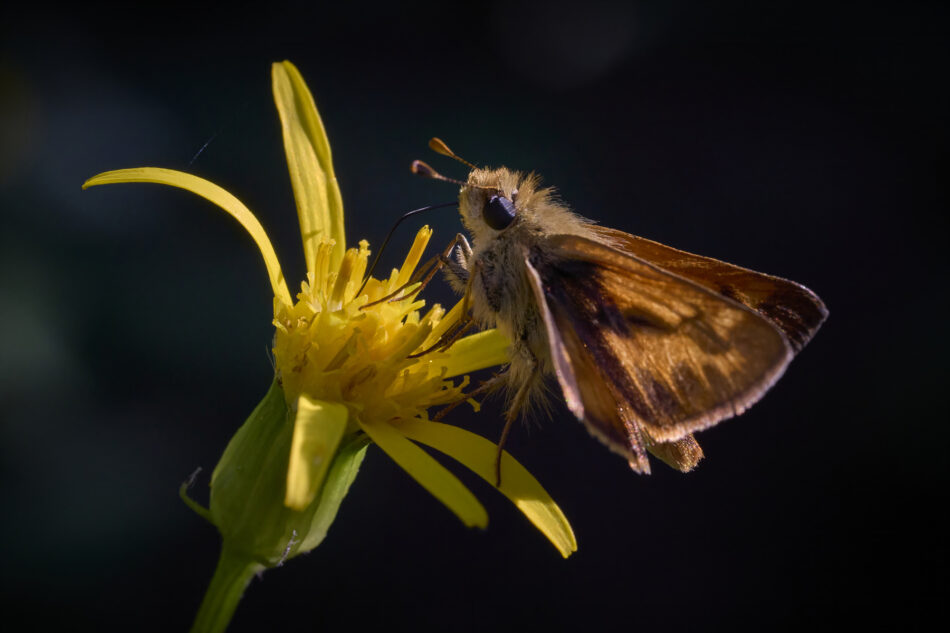
Although I am reducing my international travel, I did venture abroad a bit this past year, including to Nepal, where a woman spins prayer wheels at the Ashok Stupa, a Buddhist temple in Kathmandu.
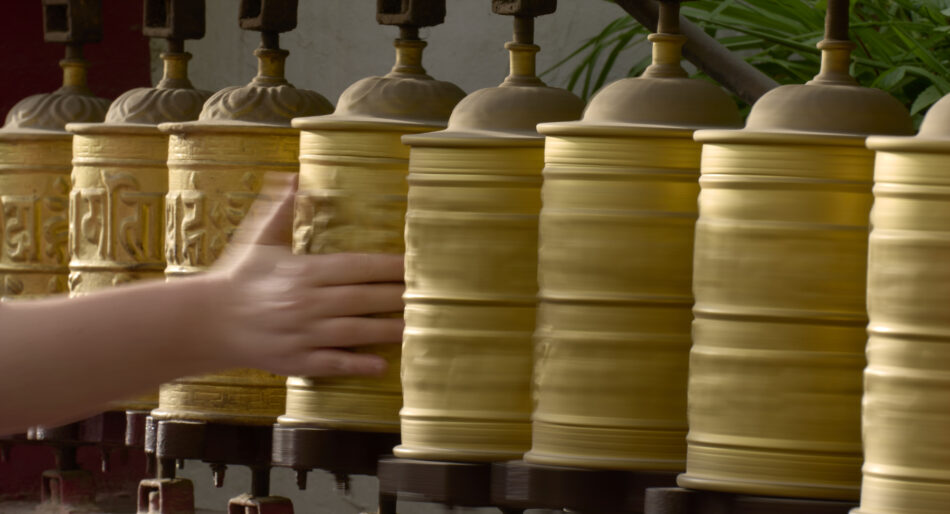
I went to Nepal to do a story about Milijuli Samaj Nepal, a women’s empowerment organization supported by United Women in Faith. One of the projects they support is the Unnati Mahila Vidyalaya School in Kathmandu, where teacher Manisha Khatri helps Jayanti Dangal form letters in a literacy class for poor women. The women in the class say they want to learn to read and write so they can be more independent, stay in touch with their children who’ve gone abroad to work, and use Facebook.
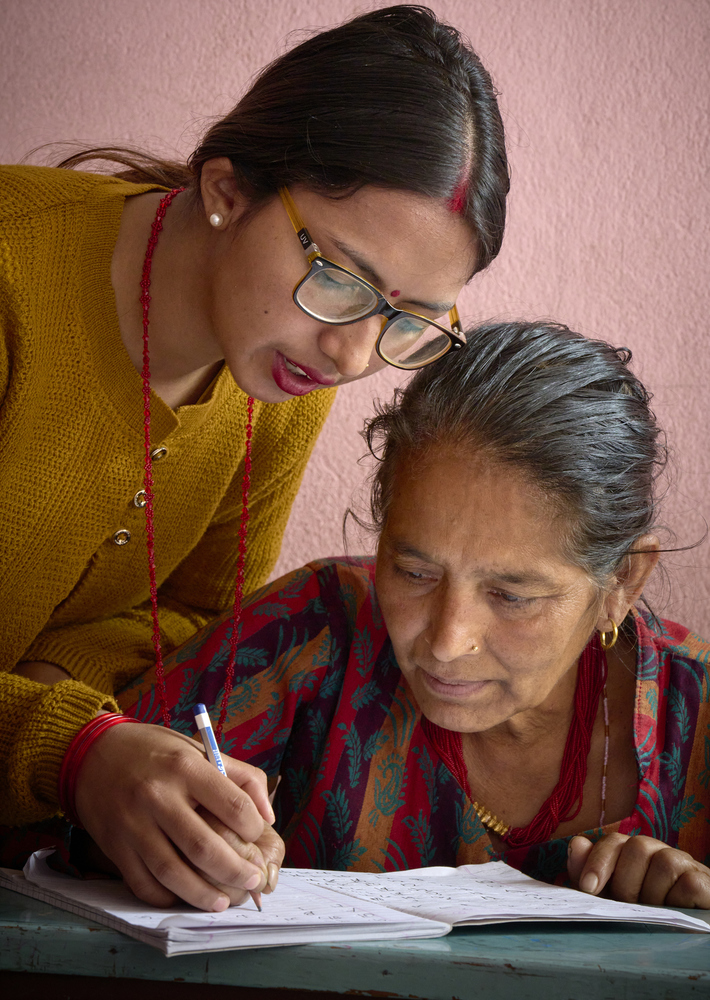
While in Nepal, I also covered a seminar on women and leadership at the Hebron United Methodist Church in Kathmandu. Five-month old Yamimah plays on the floor as her mother, Chameli Rai, participates in the gathering. (That article is forthcoming.)
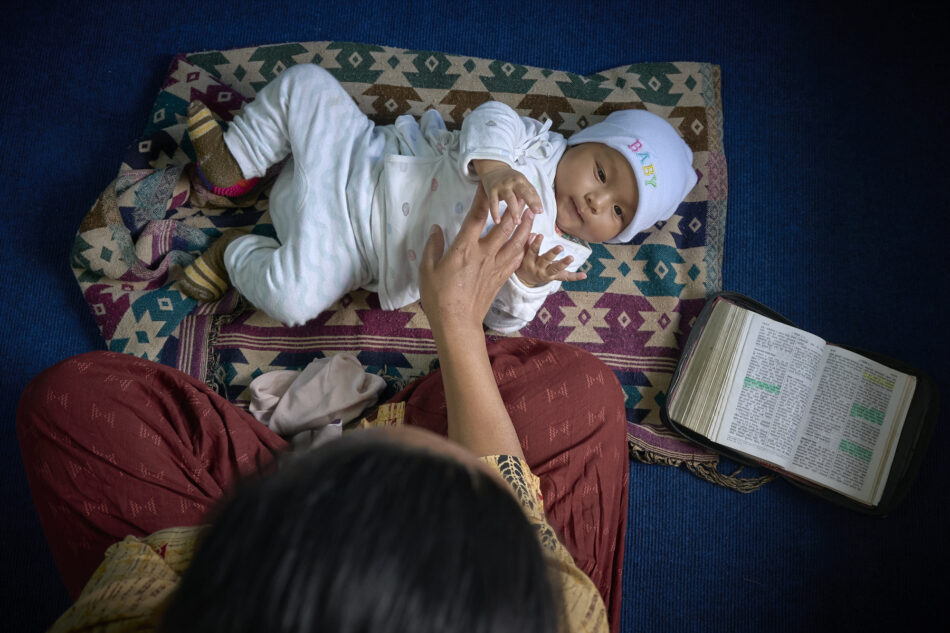
I also did a story about the congregation and its political context. Here’s a woman reading the Bible during weekly worship.
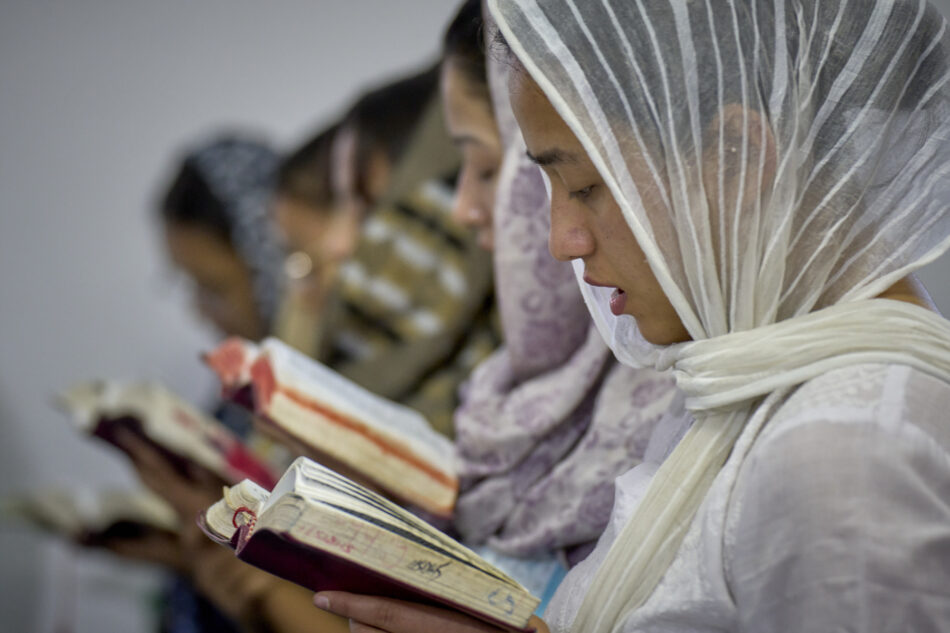
I travelled to Taiwan to do a story for Maryknoll Magazine about a Filipino-American priest who runs a comprehensive ministry with migrant workers there. Here’s Fr. Joyalito Tajonera, sprinkling holy water on the faithful following Mass at the Taichung Catholic Church in Taichung, Taiwan.
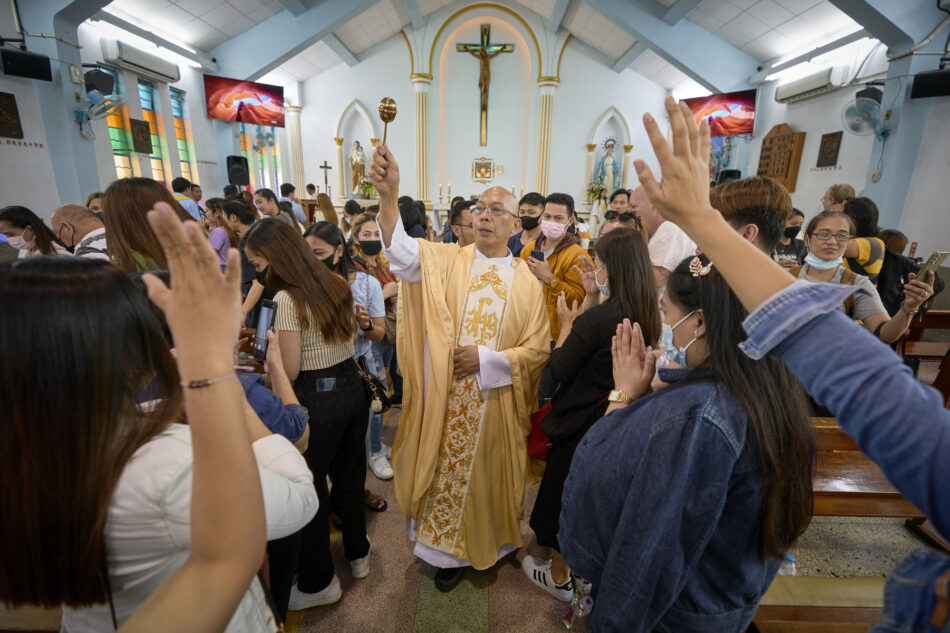
And here’s Fr. Tajonera as he baptizes Hsin yi zoa in the Tanzi Catholic Church in Taichung, Taiwan. The girl’s mother, Alina Querubin, is a migrant worker from the Philippines. She currently who lives with her daughter, whose nickname is Banini, in the Ugnayan shelter that Fr. Tajonera runs in the church. She came to Taiwan in 2018 to work to support her family back home, but soon had a child whose father is Taiwanese. Yet the girl developed health problems and the father’s family forced him to cut off all contact with Querubin and her daughter. She sought refuge in the church, which has sheltered her and her daughter and accompanied them as Querubin nurses her child back to full health.
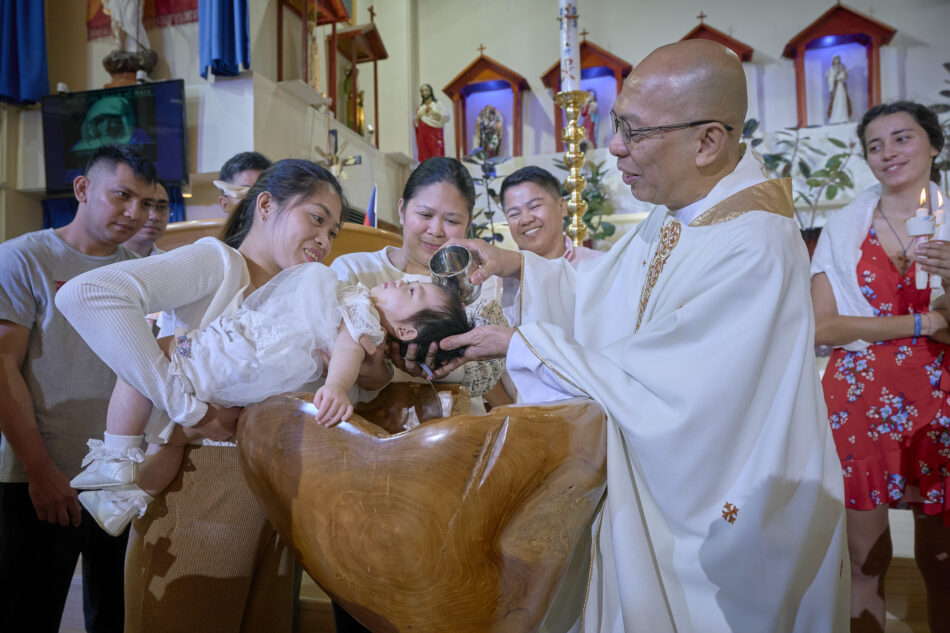
Father Joy reads the Gospel during Mass.
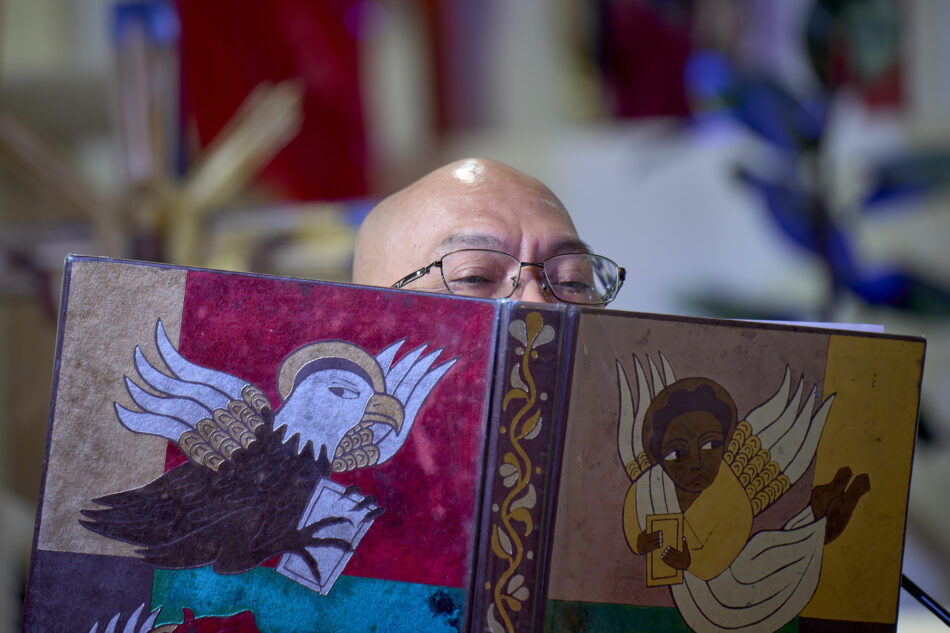
Here a Filipina migrant worker touches a replica of the Black Nazarene before Mass at the Tanzi Catholic Church in Taichung. The original Black Nazarene is located in Quiapo, a Manila neighborhood, and is widely venerated by Filipino Catholics, including those who work abroad.
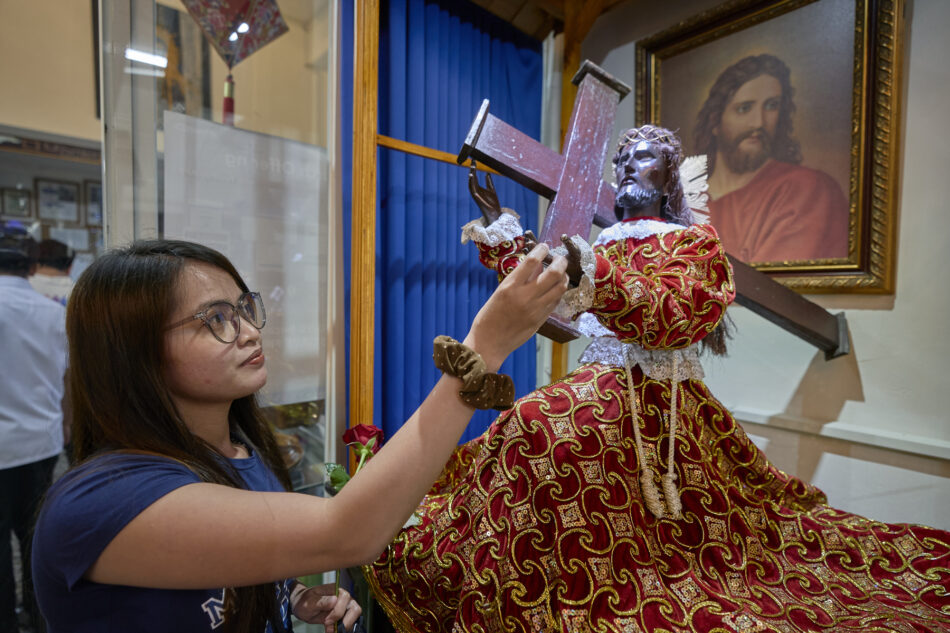
Migrant workers from the Philippines participate in Mass at the Tanzi Catholic Church in Taichung. The Mass is conducted in Filipino.
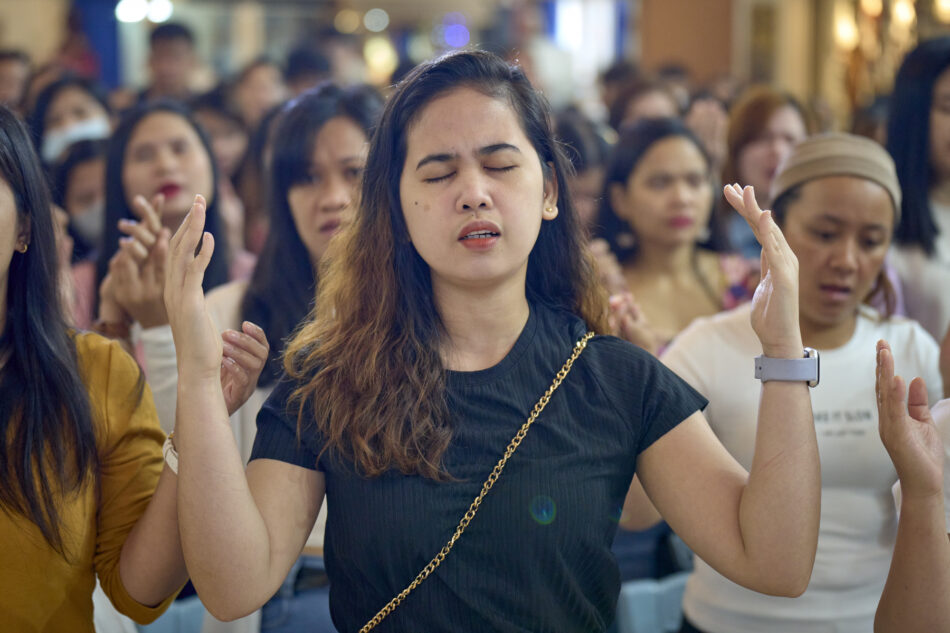
Overseas Filipino Workers pray a lot. And they sing a lot. Here’s Jhopail Garcia, a migrant worker from the Philippines, singing karaoke in a restaurant in Taichung. Hundreds of thousands of foreign workers live in Taiwan, and often gather together on their one day off each week to celebrate their home culture.

Back on my side of the Pacific, I photographed the ordination service of the Pacific Northwest Annual Conference of The United Methodist Church. With help from her daughter Maddy, Bishop Cedrick Bridgeforth ordains Mary Stanton-Nurse as a deacon in the service, which took place in Tacoma, Washington.

I went to Chicago to photograph the four-day trial of United Methodist Bishop Minerva Carcaño. Here she stands as the presiding bishop reads the jury verdict at the end of the trial in Glenview, Illinois. Carcaño was found not guilty on all four charges against her. The jury’s quick and unanimous not guilty vote on every single charge raised serious questions about the process and the motivation of those who filed charges against her.
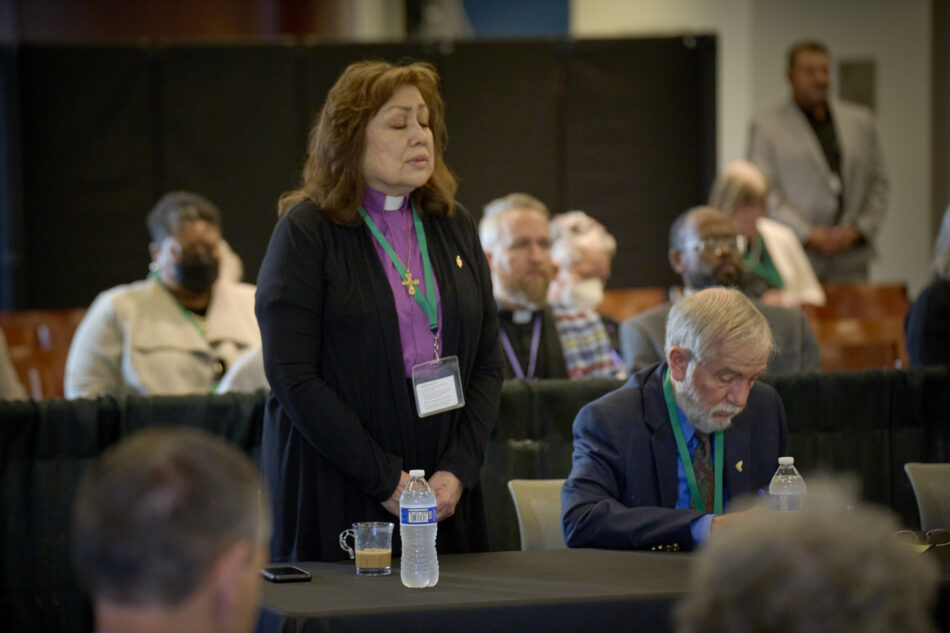
Retired United Methodist Bishop Alfred Gwinn questioned prospective jurors on the first day. Gwinn served as the presiding officer, the equivalent of a judge, in the trial. I was not allowed to photograph the jurors’ faces.
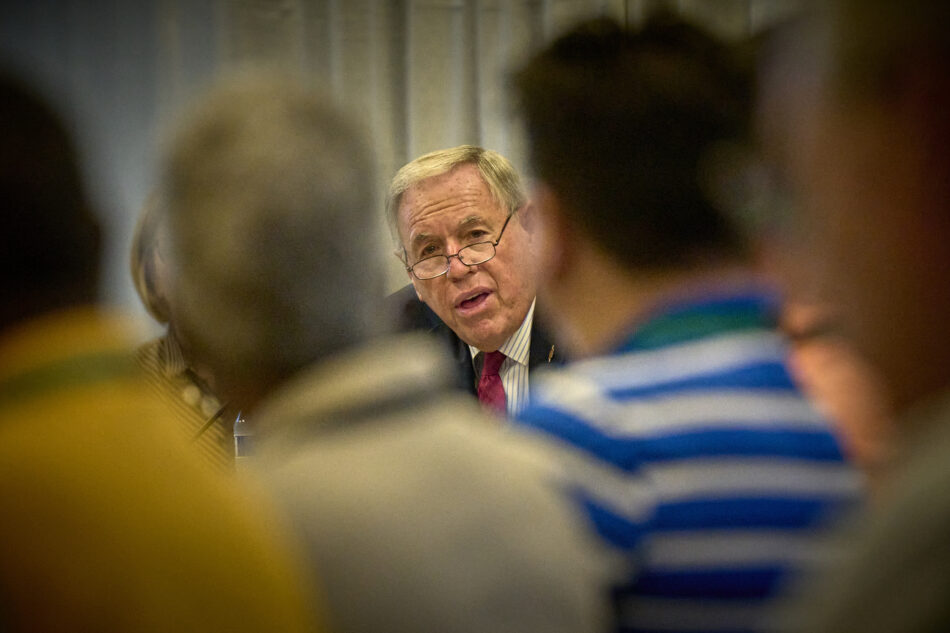
Carcaño was hugged by a woman following the announcement of the jury verdict. She was found not guilty on all charges against her.
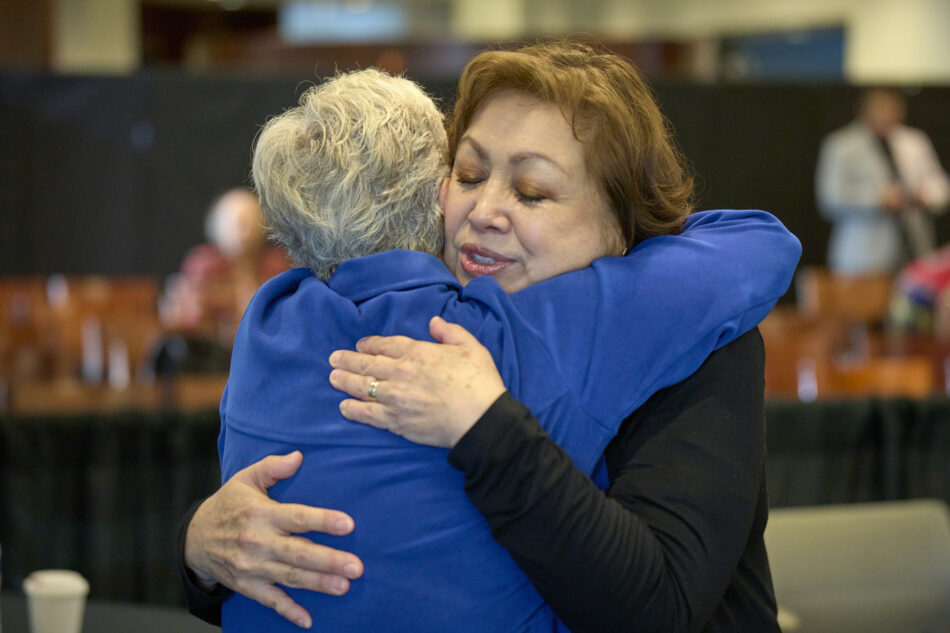
I visited Indonesia twice during the year, both times to document retreats led by Emma Cantor, a Filipina deaconess in The United Methodist Church and a regional missionary for United Women in Faith. Here she leads an exercise with Qigong movements at Talitakum, a retreat for young women held in Salatiga on the island of Java.
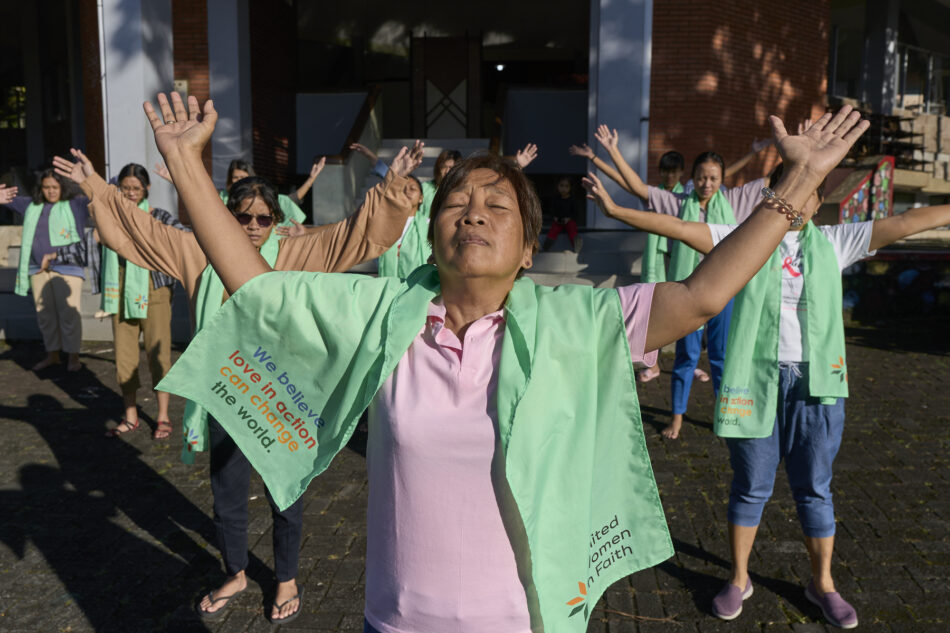
Sondang Purba, Gresia Andriani, and Irene Miracle walk on the campus of Universitas Kristen Satya Wacana in Salatiga, where they are students. All three participated in the Talitakum retreat.
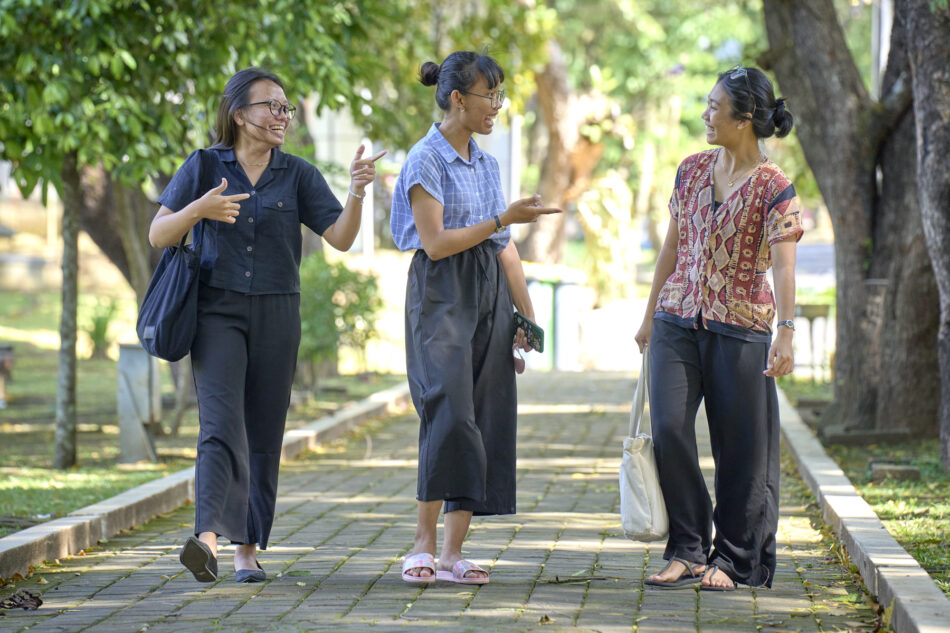
Another participant was Rena, who like many Indonesians uses just one name. Here she prays over 9-year old Candra as his mother Peni cries in the small village of Tayeman on the island of Java. The boy lives with developmental disabilities, and Rena visits the boy and his mother regularly, helping them thrive despite the difficulties. Rena is one of the organizers of Talitakum. Her ministry with families of children with disabilities was encouraged by her involvement in the retreats.
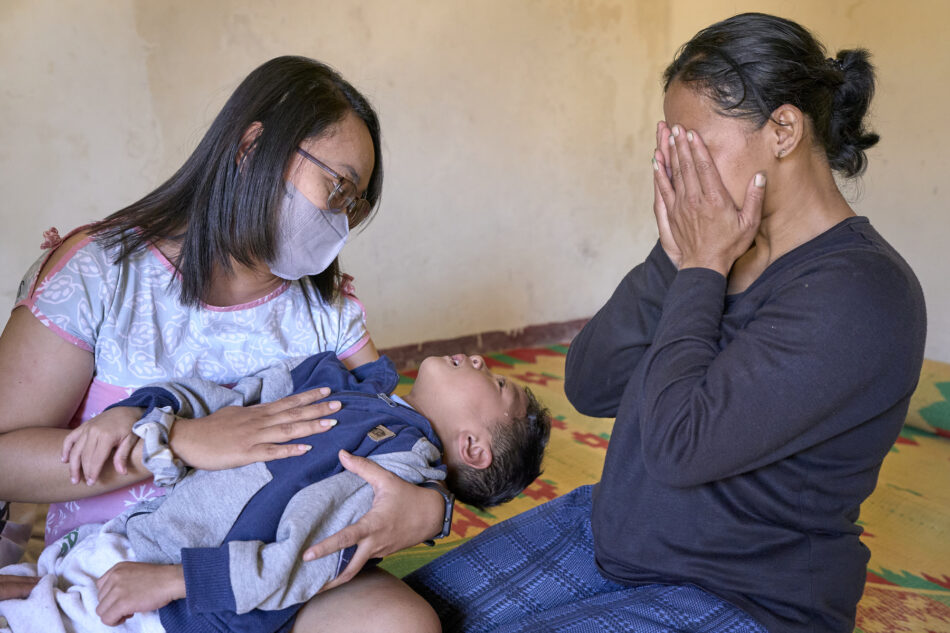
At the end of the retreat, I was invited to spend the night with the event’s planners in Ngaduman, a high mountain village where I watched children practice their traditional dances.
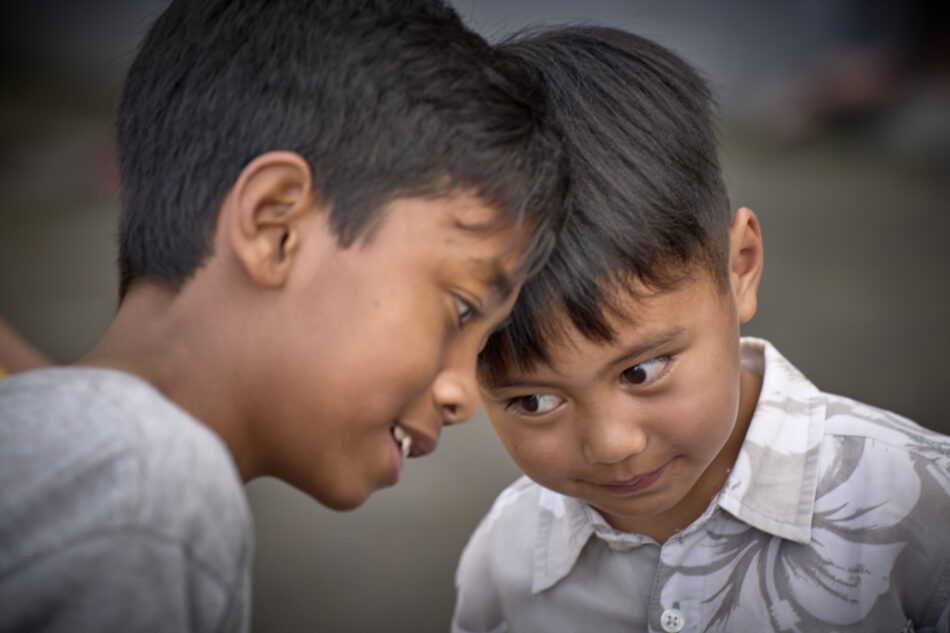
And early the next morning, I arose to find Emma practicing her Qigong movements at sunrise.

The other retreat that Emma helped lead was in Sembakung, a remote Dayak indigenous village on the island of Borneo. Sonsolon Daud was my host there, and one day I followed her to work on a palm oil plantation. The expansion of palm oil plantations has contributed to deforestation and other environmental problems on Borneo.
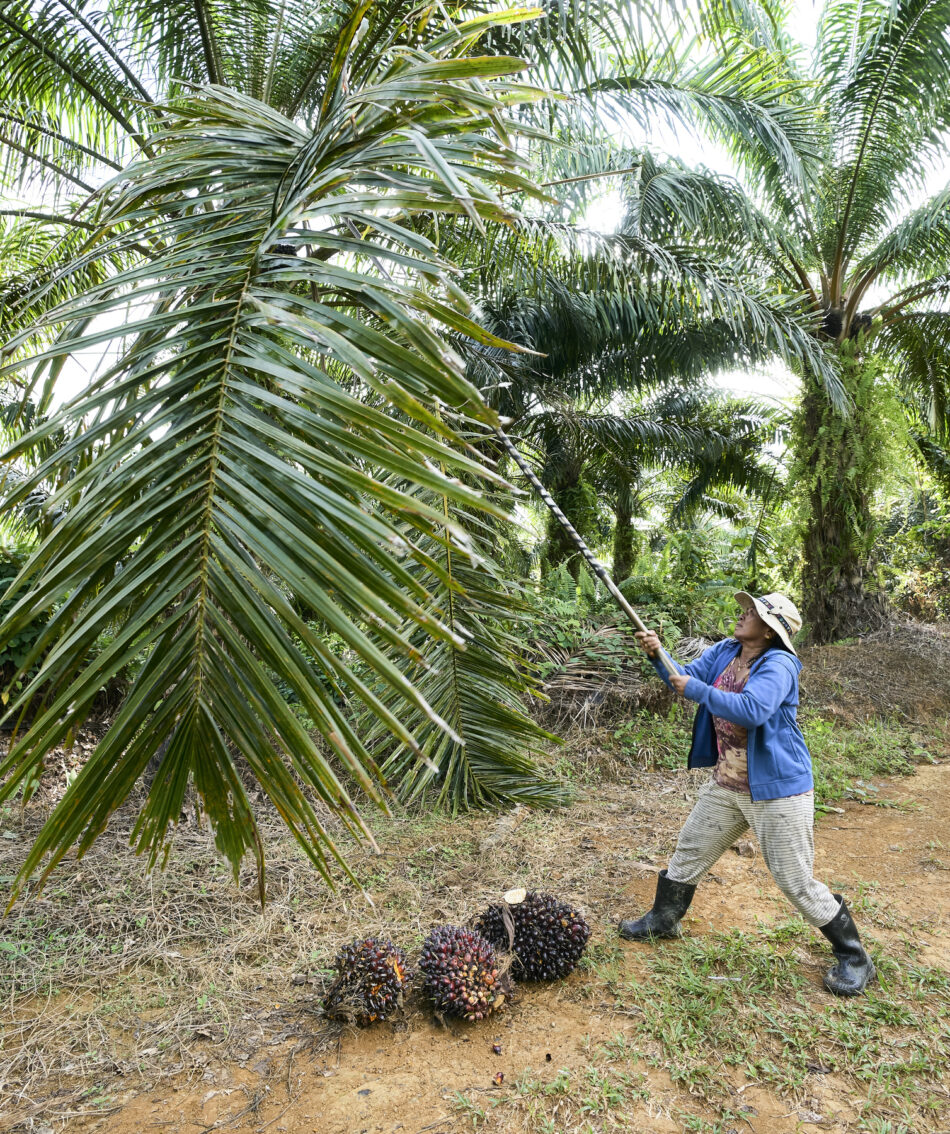
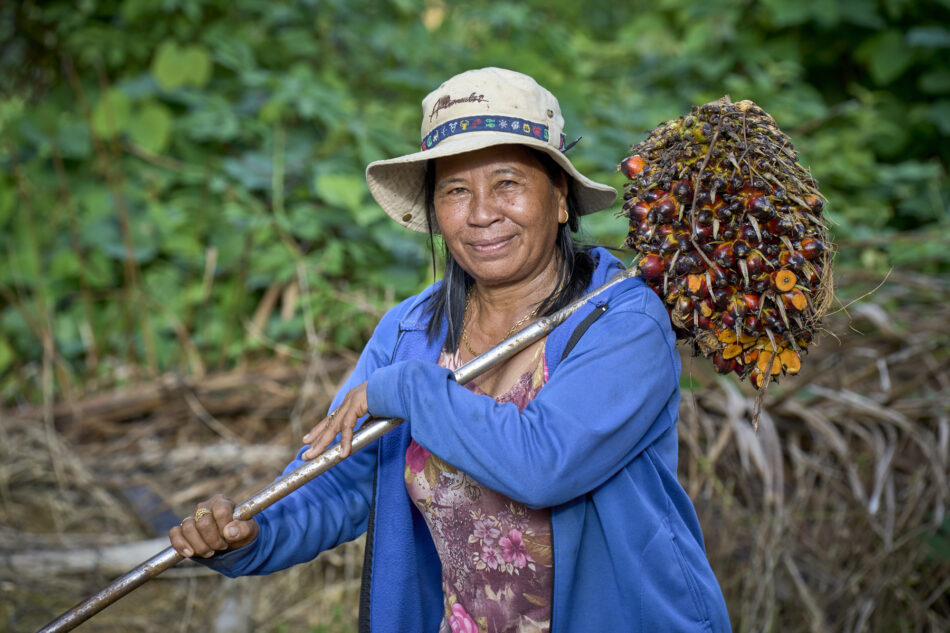
I met Marson Kayuta in the same village. Here he harvests a swift’s nest located in his three-story birdhouse. It’s home to hundreds of swiftlets who thrive around the oil palm plantations. Farmers build the bird houses with lots of rafters inside, and often mount a speaker on top that broadcasts bird chatter to attract birds. The birds fly in, build their nests, and after they’ve kicked out their fledglings, the farmers use a sharp knife to remove the nests to sell to the Chinese for bird nest soup. It’s a huge industry across the region, as good quality nests are worth a fortune and demand has risen apace with China’s growing middle class.
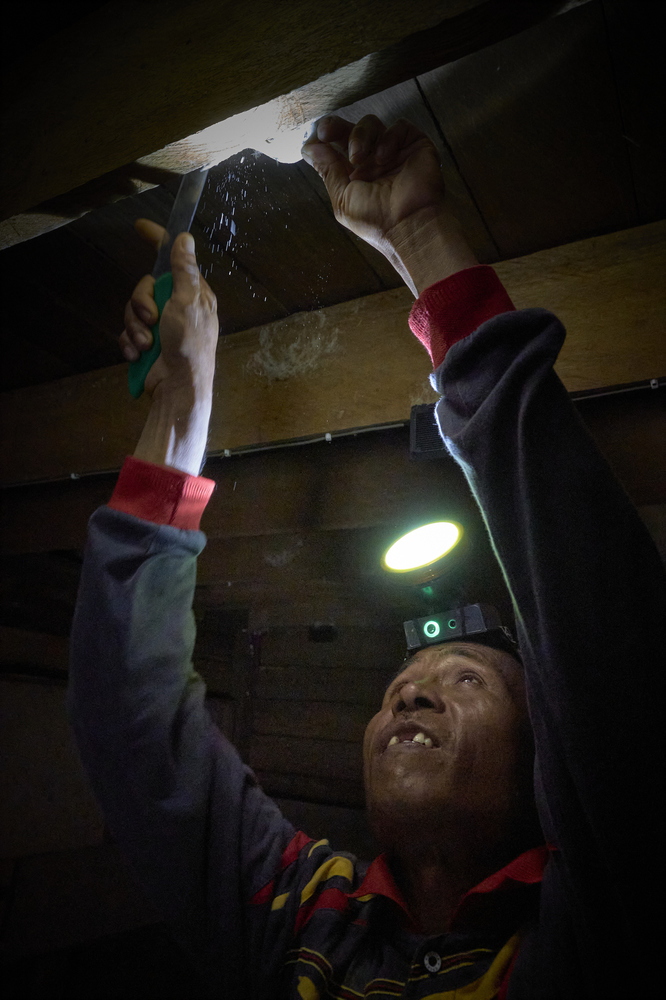
Dayak girls, dressed in indigenous clothing, welcomed retreat participants to Sembakung. The ecumenical retreat was hosted by the local congregation of the Gereja Kristen Pemancar Injil and supported by United Women in Faith. It represents a new face for UWF as the organization moves beyond relating to just Methodist groups of women. (An article on the retreats is forthcoming.)
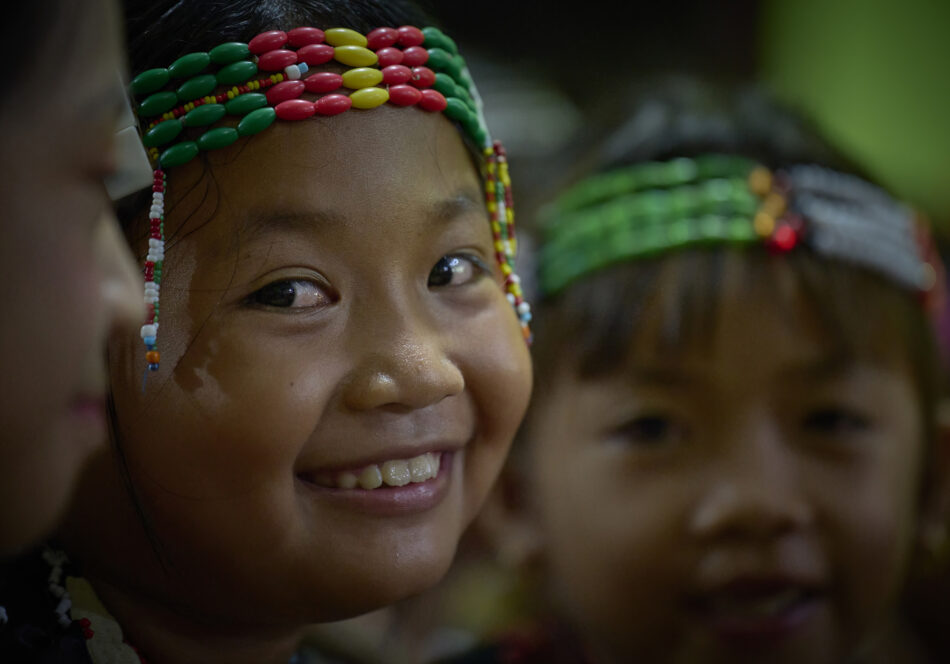
Roy Dikson is a leader in the Dayak village. He greeted me when I arrived in Malinau and then drove me along a rather tortuous road to Sembakung. Since he looked rather regal in his traditional clothing, I asked if I could photograph him. He agreed, but before he zipped up his coat I noticed his interesting shirt. So after the formal shot, I asked if he’d remove his coat. #Globalization
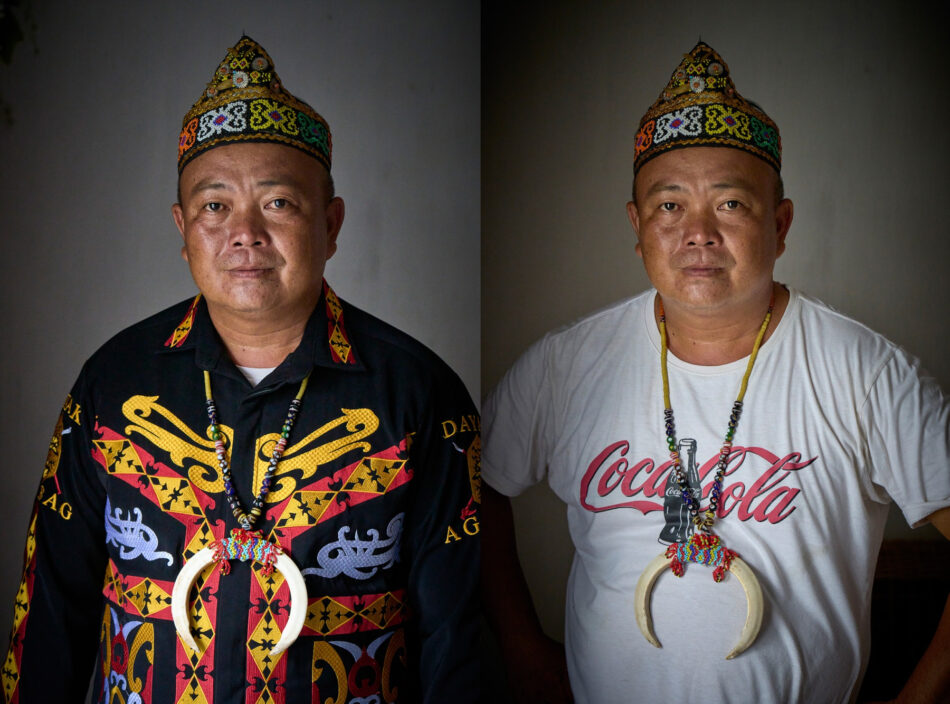
While on Java, I wrote a story for the World Council of Churches about local faith communities are responding to the climate crisis. I met people like Muryani, who is here harvesting peanuts near the village of Kemadang. She participates in a local “food barn” coordinated by the village’s Javanese Christian Church congregation. The project helps farmers impacted by the climate crisis to change their farming techniques and store their harvests in order to sell at more profitable times. Like many Indonesians, Muryani uses only one name.
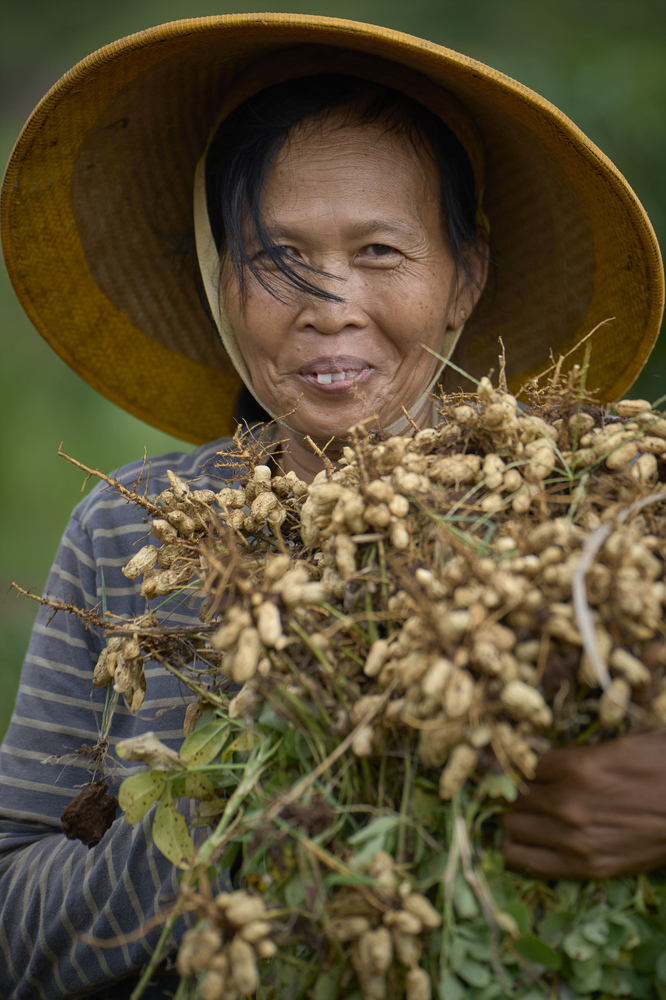
I also met Rizka (right), a member of the Javanese Christian Church, who here talks with residents along the Gadjah Wong River in Yogyakarta. She and other church volunteers have worked with the Gadjah Wong River Care Group to help people along the river better prepare for flooding and other problems caused in part by the climate crisis. (Rizka also uses only one name.)

I visited the Assalafiyyah Mlangi Eco-Boarding School in Yogyakarta, an Islamic school that has done away with single use plastic and taken several other measures in response to the climate crisis. It’s one of a growing number of eco-pesantren around the country. One of the people I interviewed was 16-year old Fika, a student from Jakarta who I photographed as she read the Quran at the school. Fika, who uses just one name, supports the changes but complains that shifting from individually packaged soap and shampoo products to more environmentally friendly hygiene products leaves her hair feeling less than squeaky clean.


Late in the year I spent a few days in Mexico City to cover the 150th anniversary celebration of the Methodist Church of Mexico. Here’s a story I wrote about it. A couple more stories will emerge after the first of the year. In this image, a woman sings during part of the celebration, which took place at the historic Gante Methodist Church in the center of Mexico City.

After the conference, I spent a few days documenting some of the work of the Mexican church, including in Apaxco, where I met Mari Angeli, here cleaning the face of her 3-year old daughter Ari after they spent the night sleeping beside the railroad tracks that run through the town. They’re from Venezuela and had been traveling for a month. They’d already spent two days in Apaxco waiting for a freight train to stop so they could climb aboard.

Wilbur, a 15-year old boy from Venezuela, helps his 5-year old sister Noemi eat a meal in a migrant shelter in Apaxco run by the Methodist Church of Mexico. The center provides food, medical care, clothing, a safe place to sleep, showers, free phone calls back home, and spiritual counseling to hundreds of migrants a day. Many migrants spend several days in Apaxco awaiting an opportunity to climb aboard a northbound freight train. The shelter receives some support from UMCOR.

Dressed as Spiderman, 4-year old Emanuel, a migrant from Venezuela, posed for me on the railroad tracks in Apaxco. Traveling with his family, he had left Venezuela over two months earlier.

Back in Mexico City, I met Victor Lugo, a migrant from Venezuela. Here he talks with two of his granddaughters in Cafemin, a migrant shelter founded by the Josephine Sisters, a Catholic religious order. The shelter has been overwhelmed in recent months by requests for temporary shelter and other forms of assistance. Changes in U.S. border policy have meant migrants are getting stuck in places like Mexico City, where they can apply for asylum in Mexico or request transit visas allowing them to travel legally to the northern border. Lugo–who volunteers in the shelter’s kitchen, thus his apron–was traveling with seven family members, including the two girls. They awaited an appointment with Mexican immigration officials, hoping for a transit visa that will allow them to proceed further north. (Because many are involved in pursuit of asylum or other legal processes, Cafemin prohibits photography of children’s faces inside the shelter.)
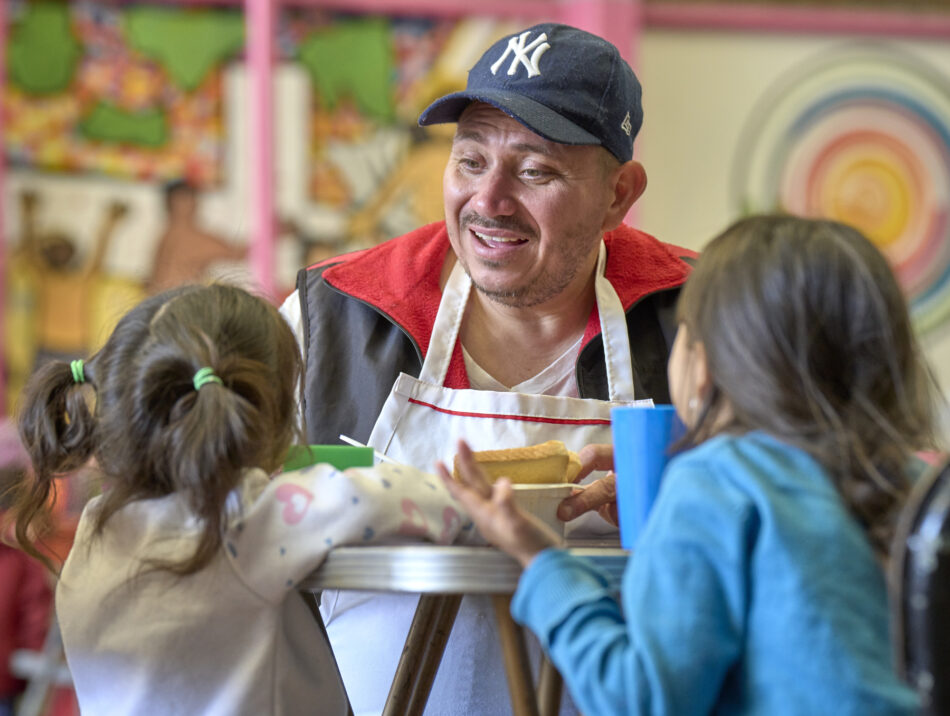
In the village of San Andrés Tlalamac, I watched as Dentist Ivon Garcia operated on 6-year old Yaretzi Valencia, who got moral support from her brother, 8-year old Jose Miguel, in a clinic run by the Methodist Church of Mexico. The children’s mother, Norma Valenica, observes in the background. The clinic, which was built by Volunteer in Mission groups from the United States, is now struggling to survive on its own. It has received some support from the United Methodist mission agency.
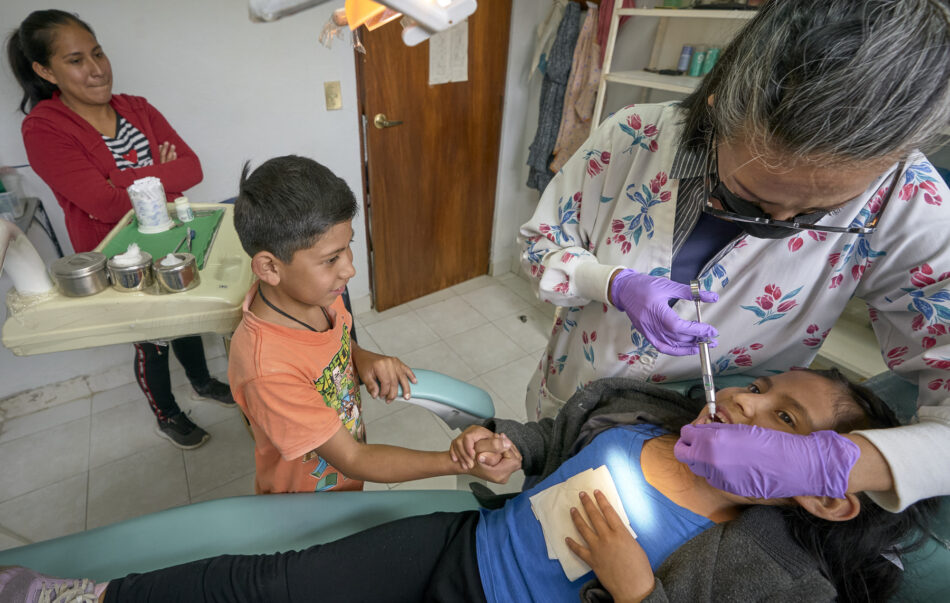
I was curious about how folks were responding to Hurricane Otis in Acapulco. The storm suddenly increased in intensity to Category 5 just before it made landfall, a symptom of warmer ocean surface temperatures brought on by the climate crisis. I got a ride to Acapulco with Methodist Bishop Agustín Altamirano Ramos, who used the trip to deliver emergency supplies to storm survivors. Altamirano is bishop of the Mexico Annual Conference of the Methodist Church of Mexico.
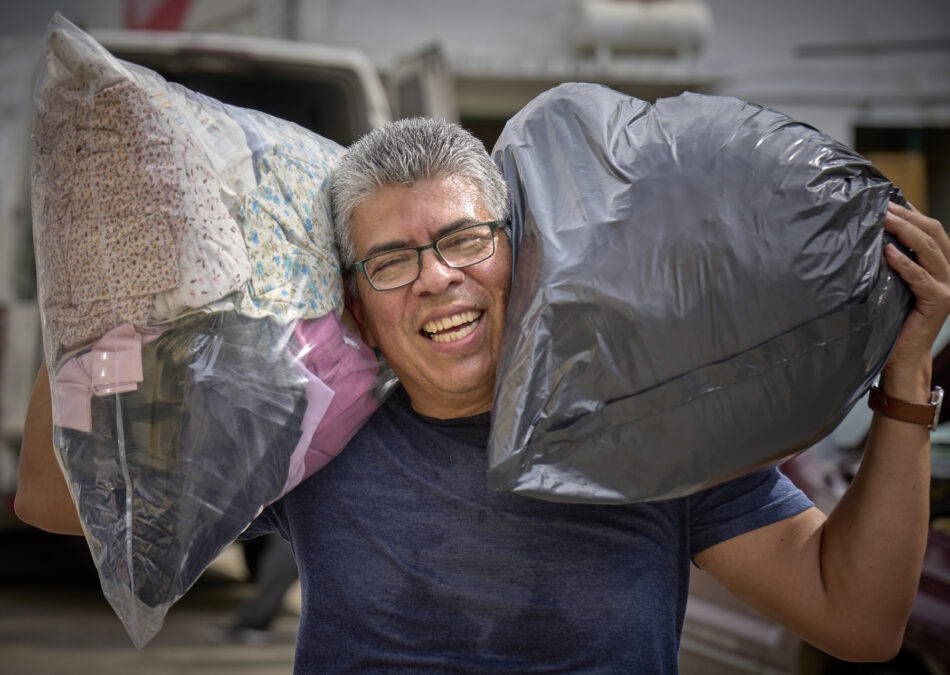
It was actually the second trip I’d made to Mexico during the year. Several months earlier, Lyda and I had escaped the cold Northwest to loiter in our Westy on the beaches of Baja California.

For decades I have eagerly read Father Bob McCahill’s letters from Bangladesh as they were published each Christmas by the National Catholic Reporter. The guy fascinated me. A Catholic priest from the U.S. living in Bangladesh, every three years he moves to a new village, picking places where there are no other Christians. He lives incredibly simply and rides his bike around finding children with disabilities who need help getting the right care. I was blessed by Maryknoll Magazine’s request to go to Bangladesh and do a story on him. It took a couple of years to arrange, but in 2023 I finally got to spend some time with him there. This article is the result.

Father Bob reads his missal inside his one-room dwelling in Srinagar, Bangladesh. Known locally as Bob Bhai – Brother Bob – the priest has served the poor in Bangladesh for more than four decades, living as a Christian missionary among Muslims.
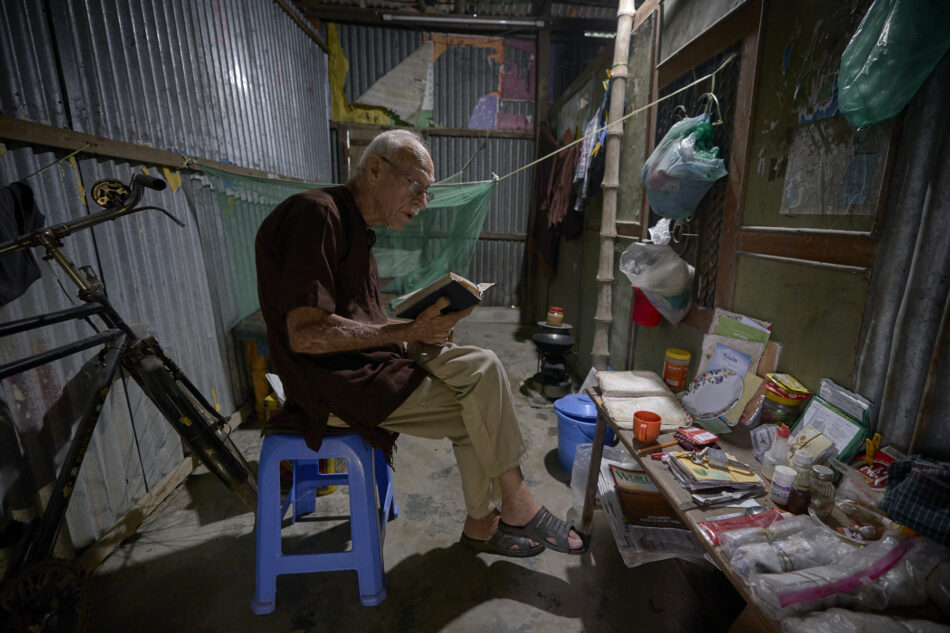
Here he visits with Jair, an 8-year old boy living with disabilities in the village of Batabhog, outside Srinagar. Holding the boy is his grandmother, Rohima.
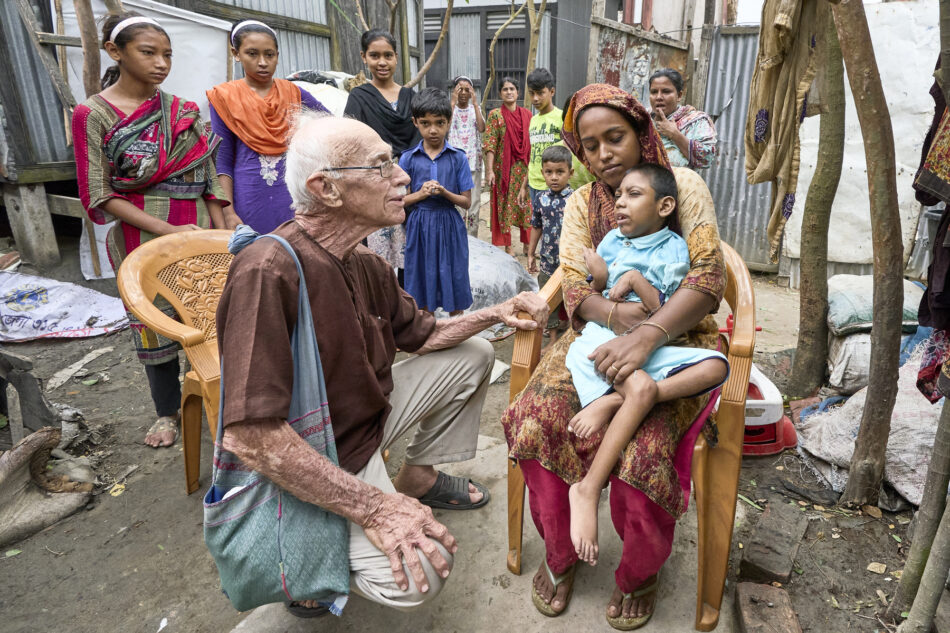
And here he visits Jamila, a 9-year old girl with disabilities in Baligao.
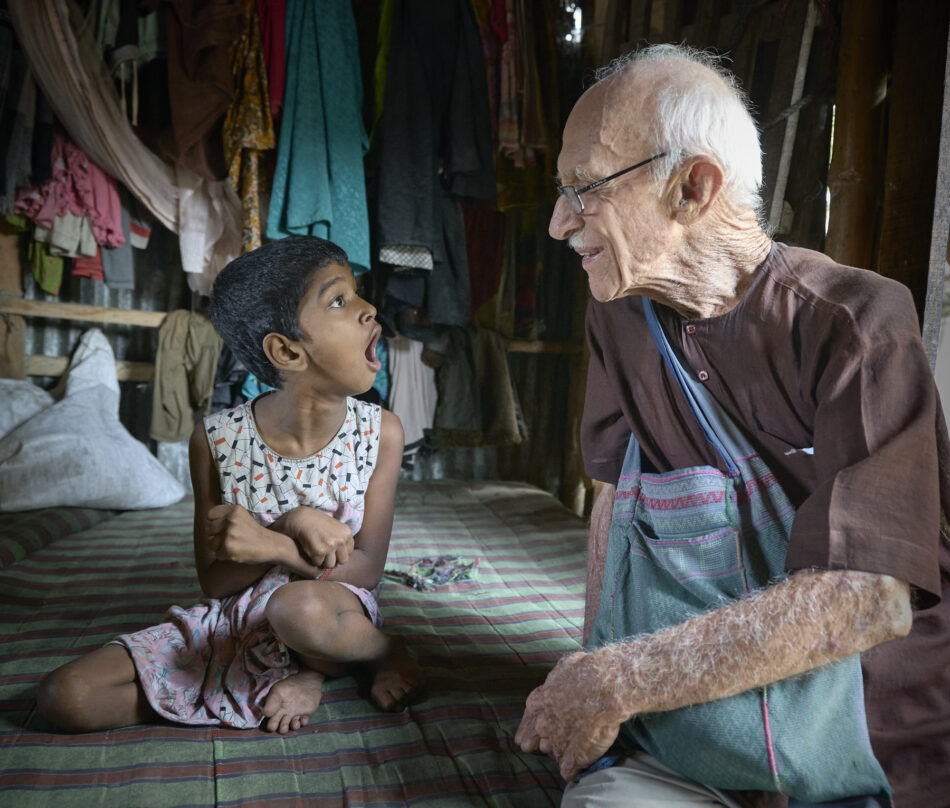
Fr. Bob’s most interesting conversations may take place in tea shops, where people ask him who he is and why he’s doing what he’s doing.
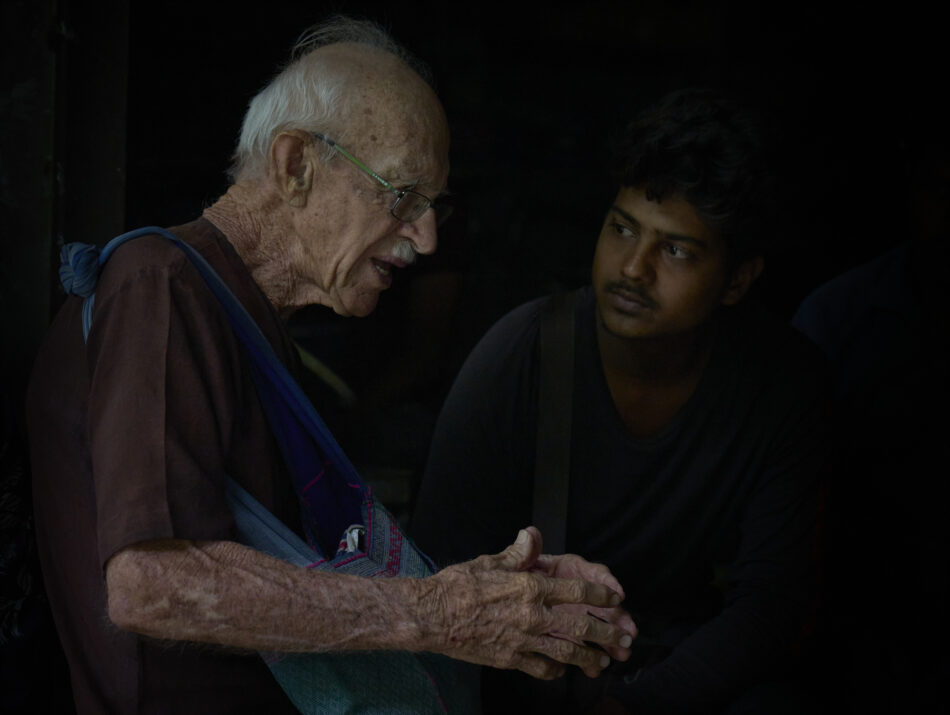
Besides chasing around after Fr. Bob, including paying a motorcycle taxi to drive in front of him as he rode his bicycle through the countryside, me photographing through a hole in the back window, my time with the priest afforded ample opportunity to craft portraits of beautiful Bangladeshis.
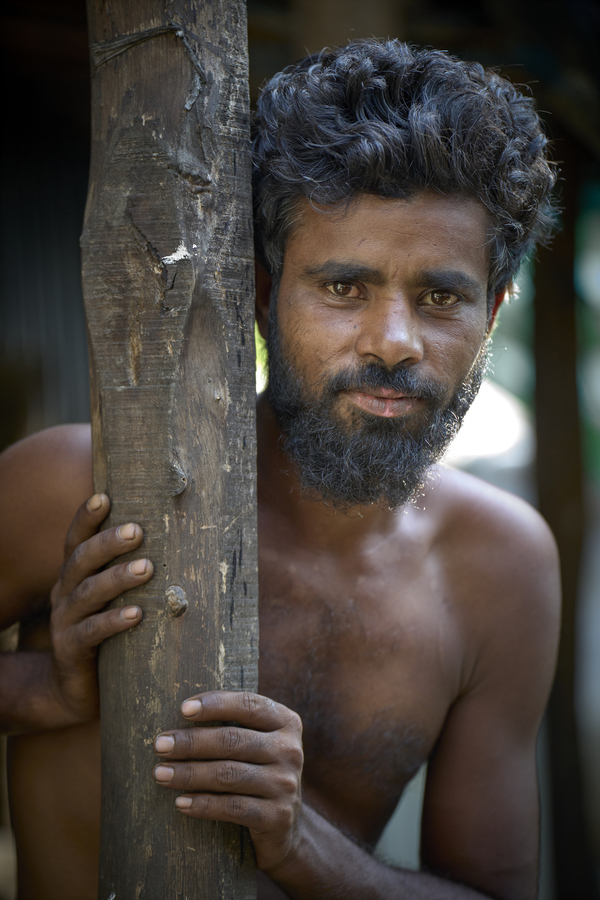

One of the reasons I’m traveling less these days is that Lyda and I are blessed to care for our grandson, who is approaching his second birthday as the year comes to a close. The Little Guy is a non-stop storm of curiosity, humor, and affection. I use my cell phone to photograph him, because he doesn’t provide notice that he’s going to do something worth capturing. It’s a life lived on the edge.

First step in learning to ride a bike was getting his helmet on. It took 15 minutes to convince him to wear the helmet, then we moved on to walking the bike. Actually riding it is still to come.
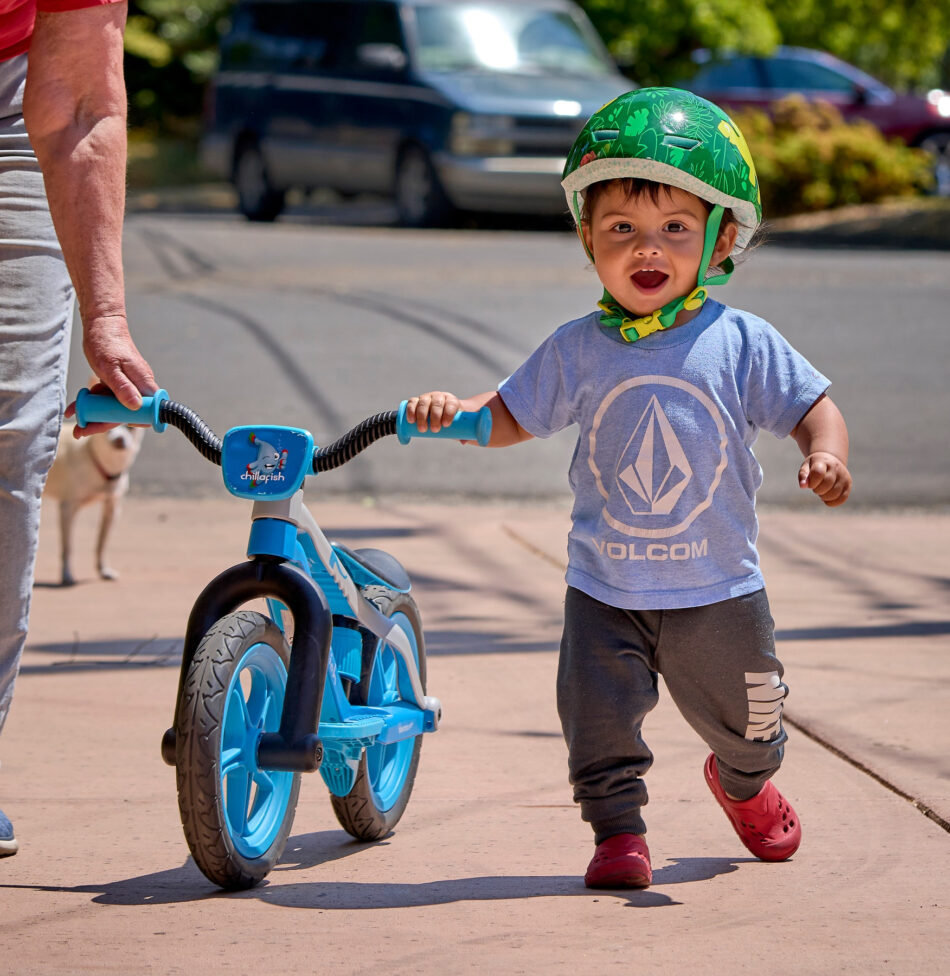
Hygiene is important to him. Well, at least making sure the soap sticks.

Lyda asked him to help her knead bread dough. He insisted the bread would taste better if he used his motorcycle for the task.
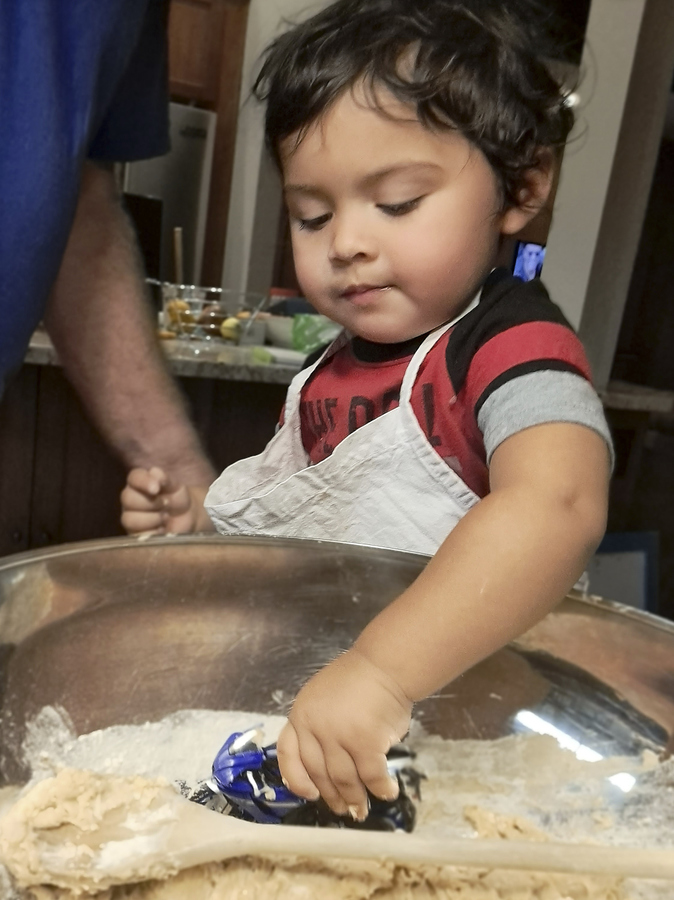
Raising a child is not easy, especially when cows are obviously doing something awful when we’re not looking.
When Uncle Lucas comes to visit, Logan helps him make music.
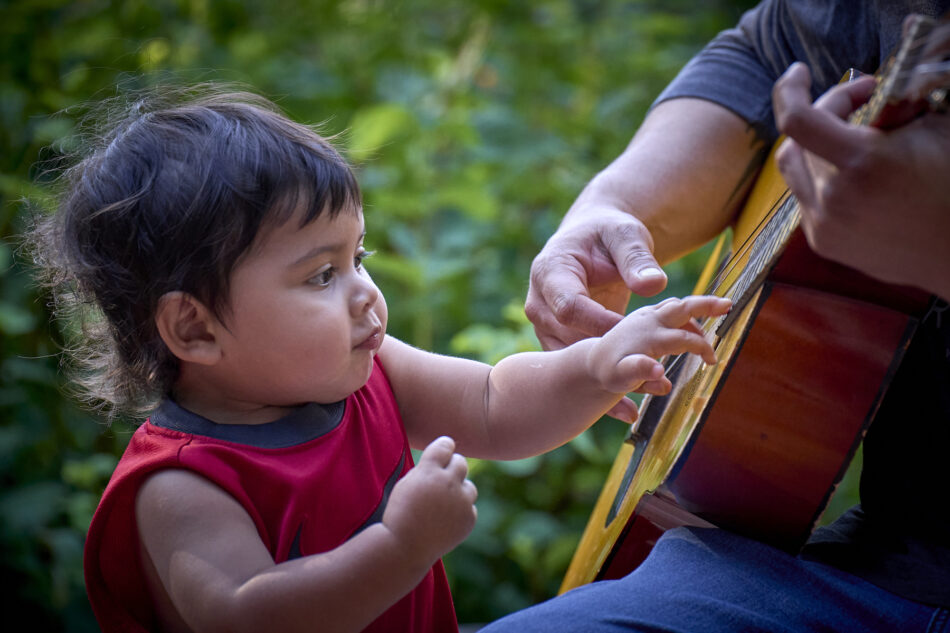
For Halloween this year, he dressed as Blippi, even though he didn’t want to put on the glasses that are part of Blippi’s character. (If you don’t know who Blippi is, you don’t have a small child in the U.S.)
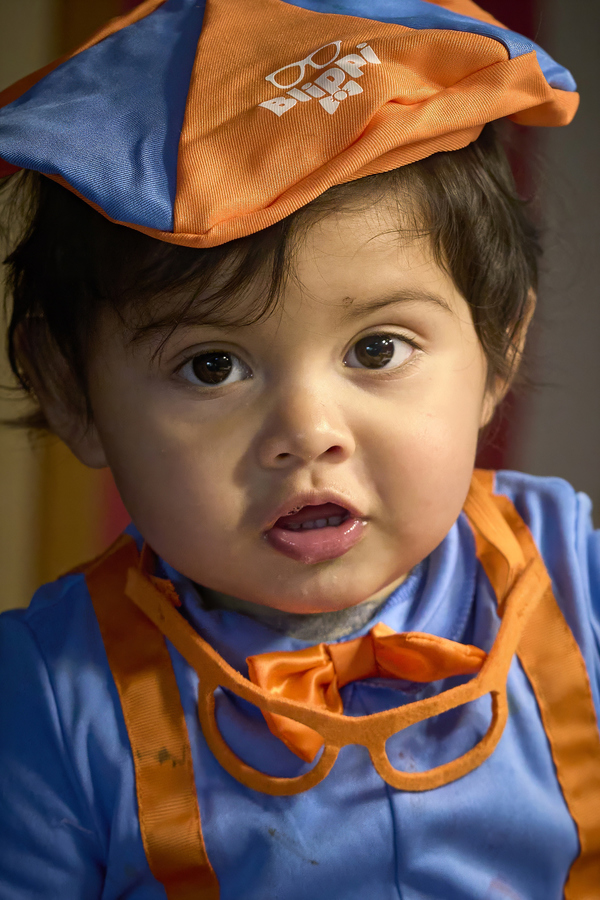
The Little Guy loves to help Lyda cook.
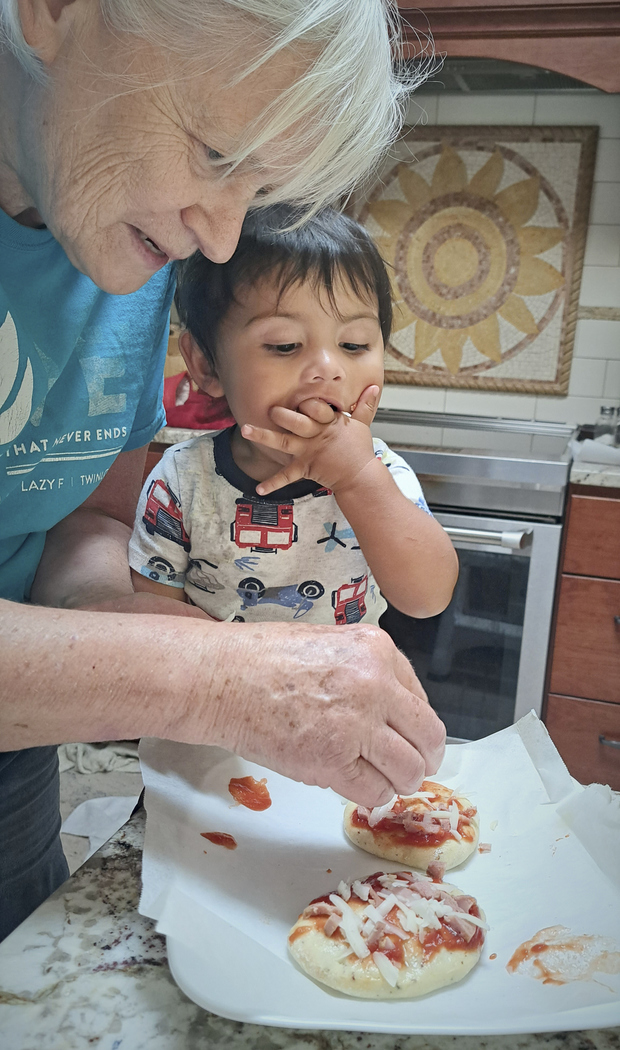
And when it came time to harvest pears in the garden, he was an enthusiastic helper.
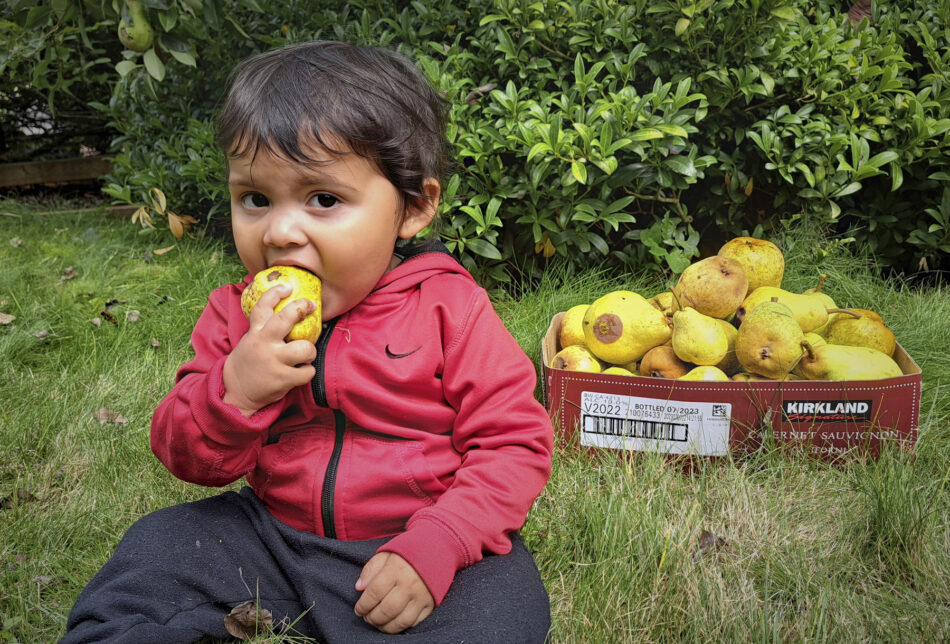
Here he is sleeping among his close friends, including Bella, our Chihuahua who died near the end of the year. Logan helped bury her, and every day has at least one conversation with us about what happened to Bella.

Since becoming aware of the world around him, Logan has been fascinated by garbage trucks, encouraged by the animated vehicle that appears in the kids’ television series Trash Truck. When the weather is nice, he and I will sometimes sit in front of the house early in the morning, waiting for the excitement we know is coming. Whatever you are waiting for in life, Logan and I hope you find it just as exciting.
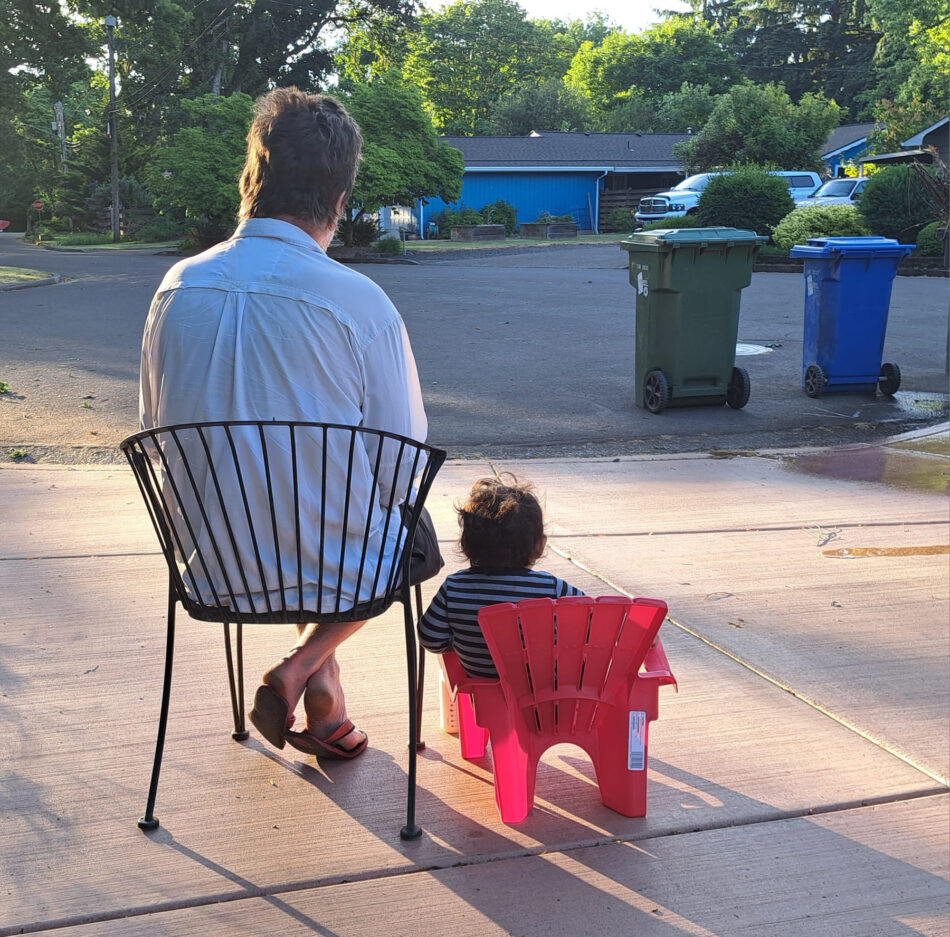
If you’re bored, here’s a look at some of my images from the year before.
7 Responses to A Year in Pictures – 2023